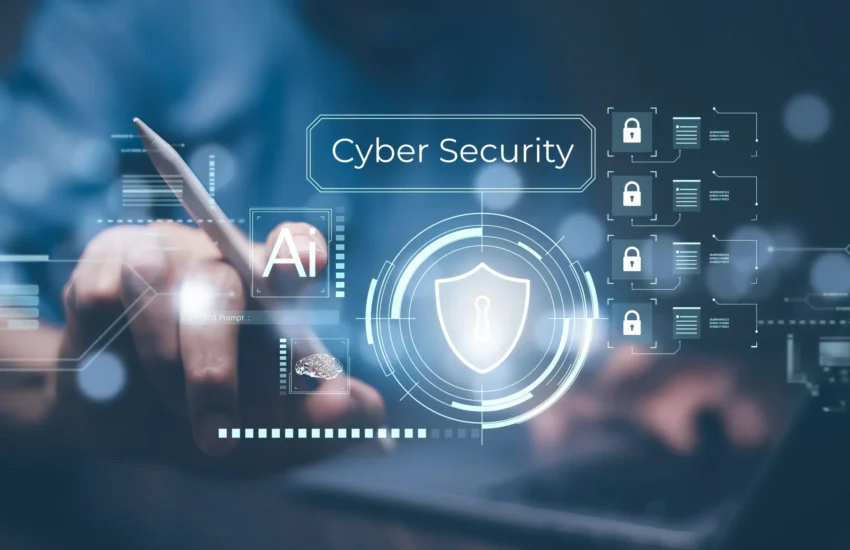In today’s digital world, cyber threats are more advanced and dangerous than ever. Whether you’re a business owner, a remote worker, or an everyday internet user, following cybersecurity best practices is essential to protect your data, devices, and digital presence. From network security to endpoint protection, implementing the right strategies can help you stay one step ahead of hackers.
This guide outlines the most effective cybersecurity best practices to follow in 2025. You’ll learn how to safeguard sensitive information, secure your network, and maintain digital hygiene with ease.
Why Cybersecurity Matters More Than Ever
Cybercrime continues to evolve with new threats emerging daily. Data breaches, ransomware attacks, phishing scams, and identity theft affect individuals and businesses alike. The cost of a cyberattack goes beyond financial loss—it can damage reputations and destroy trust.
That’s why practicing cybersecurity best practices is crucial. It allows you to reduce vulnerabilities, respond quickly to threats, and protect your digital ecosystem.
1. Keep Your Software Updated
Outdated software is one of the most common entry points for hackers. Ensure that your operating system, applications, and antivirus programs are always up to date. Software vendors often release patches that fix known security issues—don’t ignore them.
Use case: Your firewall software may miss detecting new malware strains unless you install the latest patch.
2. Use Strong, Unique Passwords
Weak passwords make it easy for attackers to gain access to your systems. Always use complex, unique passwords for each account and enable multi-factor authentication (MFA) wherever possible.
Tip: A password manager helps you create and store strong credentials securely.
3. Secure Your Network with Firewalls and Encryption
Network security plays a key role in protecting your internet connection and internal systems. Set up firewalls to monitor incoming and outgoing traffic and encrypt your Wi-Fi connection using WPA3 for better protection.
Tip: Change the default router settings and hide your network SSID for added security.
4. Protect Endpoints and Mobile Devices
Your laptops, smartphones, and tablets are common targets. Endpoint security solutions like antivirus software, device encryption, and mobile device management tools can help reduce risks.
Example: Sentinel Cyber Defender offers complete endpoint protection that monitors and quarantines threats in real-time.
5. Back Up Your Data Regularly
Always maintain secure, offline backups of critical data. Cloud backups can also be used if properly encrypted. In the event of ransomware or system failure, you can recover your information quickly without paying a ransom.
6. Beware of Phishing Emails and Links
Social engineering tactics are among the most successful forms of cyberattacks. Be cautious of suspicious emails, especially those asking for sensitive data or login credentials.
Actionable tip: Avoid clicking on unknown links and always verify the sender’s address.
7. Train Your Team on Cybersecurity Awareness
Human error is a leading cause of data breaches. Regular training helps employees identify suspicious behavior and follow internal security policies. Cover topics like secure browsing, password safety, and threat response.
8. Implement Role-Based Access Control (RBAC)
Restrict access to sensitive data based on roles and responsibilities. Not everyone in your organization needs access to every file or system. RBAC minimizes the risk of internal data leaks.
9. Monitor Your Systems Continuously
Use security monitoring tools that can detect unusual activity in real time. This proactive approach allows you to act quickly before damage occurs.
Example: Sentinel Cyber Defender offers 24/7 system monitoring and alerts for threats as they emerge.
10. Adopt a Zero Trust Security Model
The Zero Trust approach assumes no user or device is trustworthy by default—even if they are inside your network. It requires strict identity verification for every access attempt, thereby reducing security risks.
How We Can Help You
At Sentinel Cyber Defender, we understand the importance of protecting your data and digital infrastructure. Our cybersecurity experts offer a full suite of solutions—from network security to endpoint protection and beyond. Whether you’re a small business or a large enterprise, we can design a custom security plan tailored to your specific needs.
We offer:
- 24/7 security monitoring
- Real-time threat detection
- Multi-layered endpoint protection
- Data encryption and backup solutions
- Compliance support (ISO 27001, GDPR, NIST)
With our team by your side, you’ll gain peace of mind knowing your digital assets are secured against the latest threats.
Conclusion
Practicing cybersecurity best practices is not optional—it’s a necessity. With the increasing number of cyber threats, protecting your data, devices, and digital operations requires constant attention and the right strategies.
Within the first 100 seconds of any online interaction, you could be exposed to malware, phishing attempts, or identity theft. That’s why focusing on cybersecurity best practices—like regular updates, strong passwords, endpoint protection, and real-time monitoring—is essential to avoid disaster.
By taking a proactive approach to network security, data protection, and endpoint security, you’ll not only protect yourself but also build a secure digital environment for your users and clients.
FAQs About Cybersecurity Best Practices
1. What is the most important cybersecurity best practice for small businesses?
Using strong passwords and enabling multi-factor authentication are crucial. Also, regularly updating software and employee training can greatly reduce risk.
2. How often should I back up my data?
Daily backups are ideal, especially for businesses. At the very least, you should back up critical data weekly and test your backup recovery regularly.
3. Is antivirus software enough to keep me safe?
No. Antivirus software is a good first line of defense, but you also need firewalls, endpoint security, and strong internal policies for full protection.
4. What should I do if I suspect a phishing attack?
Do not click any links or download attachments. Report the email to your IT team or email provider, and block the sender if necessary.
5. How can I secure my Wi-Fi network at home?
Use WPA3 encryption, change your default router credentials, and hide your network SSID. Also, limit who has access to your Wi-Fi password.

